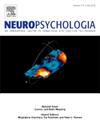无监督聚类揭示了失像症和典型意象的空间和语言认知特征。
IF 2
3区 心理学
Q3 BEHAVIORAL SCIENCES
引用次数: 0
摘要
对许多人来说,心理意象是一种无处不在的现象。它的缺失——幻像症——最近引起了越来越多的科学兴趣。人们发现,有幻觉症的人在大多数领域的表现与典型的成象者一样好。有几项研究表明,患有幻觉症的人可能有一种更“语义和抽象”的功能模式。本研究旨在通过考察失读症患者在语义和抽象加工方面的表现,更好地了解失读症患者的认知特征。为此,45名患有失读症的参与者和51名对照组完成了调查问卷和行为任务,评估感官和空间意象、言语策略、言语和非言语推理以及言语和空间工作记忆。最初的组间比较显示差异很小。我们没有将调查局限于预先设定的群体比较,而是采用了一种跨类别、数据驱动的方法,以发现基于任务表现和主观报告的潜在认知概况。在整个样本中,无监督聚类揭示了三组认知概况,分别以视觉意象、空间意象和语言策略为中心。至关重要的是,幻像症患者分布在这两种情况中。其中一组表现出低视觉意象,但保持多感官意象和高空间意象,而另一组在所有感官模式中表现出低意象,更依赖于语言处理。这些发现揭示了失视症和对照组之间的显著异质性,超出了视觉意象的差异。他们强调了考虑空间和语言认知维度与视觉现象学的重要性。通过识别超越传统意象分类的认知概况,我们的研究结果为理解心理表征的个体差异与行为之间的关系提供了多维框架。本文章由计算机程序翻译,如有差异,请以英文原文为准。
Unsupervised clustering reveals spatial and verbal cognitive profiles in aphantasia and typical imagery
Mental imagery is a ubiquitous phenomenon for many people. Its absence - aphantasia - has recently attracted increasing scientific interest. Individuals with aphantasia are found to perform as well as typical imagers in most areas. Several studies have proposed that individuals with aphantasia might have a more ‘semantic and abstract’ mode of functioning. The present study aimed to better understand the cognitive profile of individuals with aphantasia by examining their performance regarding semantic and abstract processing. To that end, 45 participants with aphantasia and 51 controls completed questionnaires and behavioural tasks assessing sensory and spatial imagery, verbal strategies, verbal and non-verbal reasoning, and verbal and spatial working memory. Initial group comparisons revealed minimal differences. Rather than limiting our investigation to predefined group comparisons, we then adopted a trans-categorical, data-driven approach to uncover latent cognitive profiles based on task performance and subjective reports. Unsupervised clustering across the full sample revealed three clusters of cognitive profiles centred respectively on visual imagery, spatial imagery and verbal strategies. Crucially, individuals with aphantasia were distributed across two of these profiles. One showed low visual imagery but maintained multisensory imagery and high spatial imagery, while the other displayed low imagery across all sensory modalities and stronger reliance on verbal processing. These findings reveal significant heterogeneity within both aphantasia and control groups, extending beyond differences in visual imagery. They highlight the importance of considering spatial and verbal cognitive dimensions alongside visual phenomenology. By identifying cognitive profiles that transcend traditional imagery classifications, our results support a multidimensional framework for understanding how individual differences in mental representation relate to behaviour.
求助全文
通过发布文献求助,成功后即可免费获取论文全文。
去求助
来源期刊

Neuropsychologia
医学-行为科学
CiteScore
5.10
自引率
3.80%
发文量
228
审稿时长
4 months
期刊介绍:
Neuropsychologia is an international interdisciplinary journal devoted to experimental and theoretical contributions that advance understanding of human cognition and behavior from a neuroscience perspective. The journal will consider for publication studies that link brain function with cognitive processes, including attention and awareness, action and motor control, executive functions and cognitive control, memory, language, and emotion and social cognition.
 求助内容:
求助内容: 应助结果提醒方式:
应助结果提醒方式:


